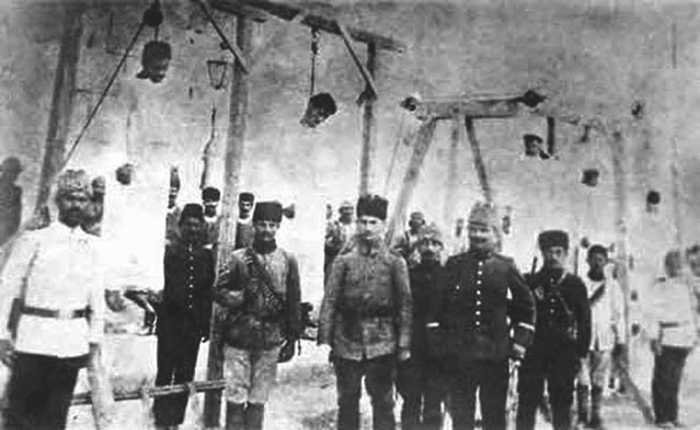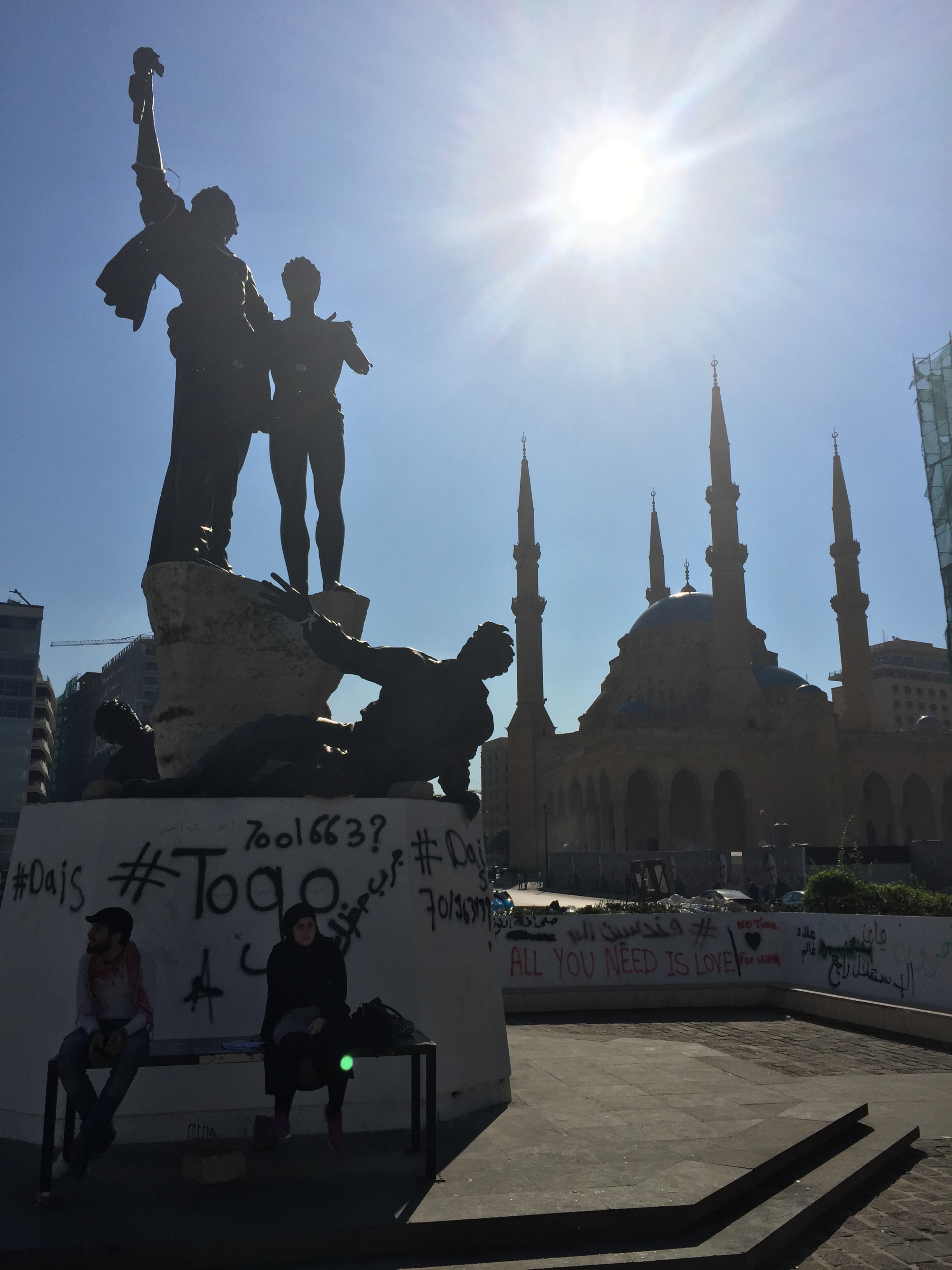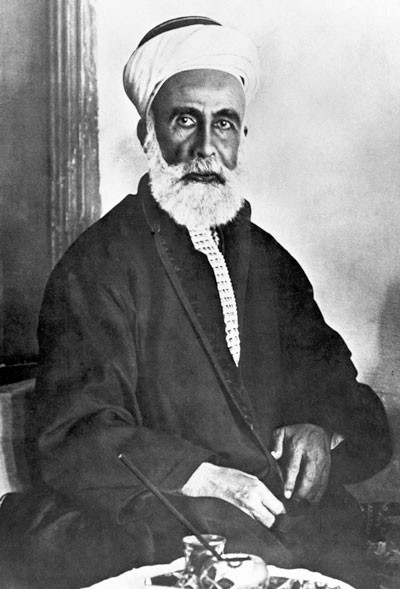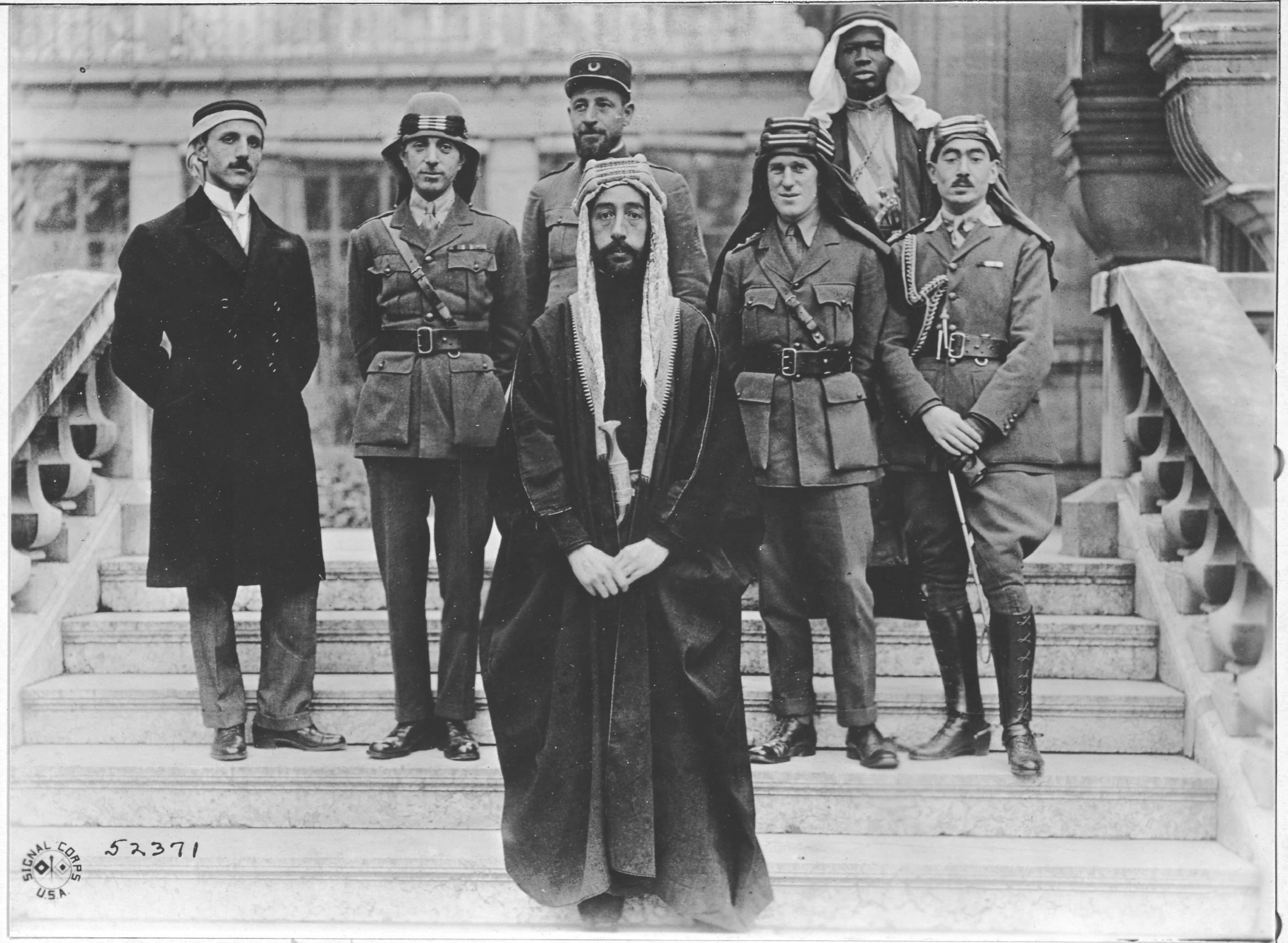|
Yusuf Al-Hani
Yusuf al-Hani (also anglicised as Joseph Hani; died 5 April 1916) was a Lebanese Maronite resident of Beirut hanged by the Ottoman Empire for communicating with French diplomat François Georges-Picot in 1913. Biography Al-Hani was a Christian Maronite Arab and resident of Beirut, in modern Lebanon. In March 1913 he was one of six men who had signed a letter to the French consul in Beirut, François Georges-Picot, requesting French assistance to liberate Syria and Lebanon from the rule of the Ottoman Empire. The outbreak of the First World War in 1914, in which the Ottoman Empire declared war on France and the other Allies, led to the evacuation of the French consulate in Beirut. Picot was advised by the American consul, Stanley Hollis, to destroy his secret papers but refused to do so. Picot, who thought the war would last just a couple of weeks, hid his documents behind a panel in the consulate building. The hiding place of the documents was known to another Maronite, ... [...More Info...] [...Related Items...] OR: [Wikipedia] [Google] [Baidu] |
Maronite
The Maronites ( ar, الموارنة; syr, ܡܖ̈ܘܢܝܐ) are a Christian ethnoreligious group native to the Eastern Mediterranean and Levant region of the Middle East, whose members traditionally belong to the Maronite Church, with the largest concentration long residing near Mount Lebanon in modern Lebanon. The Maronite Church is an Eastern Catholic particular church in full communion with the Pope and the rest of the Catholic Church, whose membership also includes non-ethnic Maronites. The Maronites derive their name from the Syriac Christian saint Maron, some of whose followers migrated to the area of Mount Lebanon from their previous place of residence around the area of Antioch, and established the nucleus of the Antiochene Syriac Maronite Church. Christianity in Lebanon has a long and continuous history. Biblical scriptures purport that Peter and Paul evangelized the Phoenicians, whom they affiliated to the ancient patriarchate of Antioch. The spread of Christianity ... [...More Info...] [...Related Items...] OR: [Wikipedia] [Google] [Baidu] |
Place Des Martyrs, Beirut, Monument 2016 1
Place may refer to: Geography * Place (United States Census Bureau), defined as any concentration of population ** Census-designated place, a populated area lacking its own municipal government * "Place", a type of street or road name ** Often implies a dead end (street) or cul-de-sac * Place, based on the Cornish word "plas" meaning mansion * Place, a populated place, an area of human settlement ** Incorporated place (see municipal corporation), a populated area with its own municipal government * Location (geography), an area with definite or indefinite boundaries or a portion of space which has a name in an area Placenames * Placé, a commune in Pays de la Loire, Paris, France * Plače, a small settlement in Slovenia * Place (Mysia), a town of ancient Mysia, Anatolia, now in Turkey * Place, New Hampshire, a location in the United States * Place House, a 16th-century mansion largely remodelled in the 19th century, in Fowey, Cornwall * Place House, a 19th-century mansion on ... [...More Info...] [...Related Items...] OR: [Wikipedia] [Google] [Baidu] |
Lebanese Arab Nationalists
Lebanese may refer to: * Something of, from, or related to the Lebanese Republic * Lebanese people, people from Lebanon or of Lebanese descent * Lebanese Arabic, the colloquial form of Arabic spoken in Lebanon * Lebanese culture * Lebanese cuisine See also * * List of Lebanese people This is a list of notable individuals born and residing mainly in Lebanon. Lebanese expatriates residing overseas and possessing Lebanese citizenship are also included. Activists * Lydia Canaan – activist, advocate, public speaker, and Unite ... {{disambig Language and nationality disambiguation pages ... [...More Info...] [...Related Items...] OR: [Wikipedia] [Google] [Baidu] |
1916 Deaths
Events Below, the events of the First World War have the "WWI" prefix. January * January 1 – The British Royal Army Medical Corps carries out the first successful blood transfusion, using blood that had been stored and cooled. * January 9 – WWI: Gallipoli Campaign: The last British troops are evacuated from Gallipoli, as the Ottoman Empire prevails over a joint British and French operation to capture Constantinople. * January 10 – WWI: Erzurum Offensive: Russia defeats the Ottoman Empire. * January 12 – The Gilbert and Ellice Islands Colony, part of the British Empire, is established in present-day Tuvalu and Kiribati. * January 13 – WWI: Battle of Wadi: Ottoman Empire forces defeat the British, during the Mesopotamian campaign in modern-day Iraq. * January 29 – WWI: Paris is bombed by German zeppelins. * January 31 – WWI: An attack is planned on Verdun, France. February * February 9 – 6.00 p.m. – Tristan Tz ... [...More Info...] [...Related Items...] OR: [Wikipedia] [Google] [Baidu] |
Martyrs' Day (Lebanon And Syria)
Martyrs' Day ( ar, عيد الشهداء) is a Syrian and Lebanese national holiday commemorating the Syrian and Lebanese nationalists executed in Damascus and Beirut on 6 May 1916 by Jamal Pasha, also known as 'Al Jazzar' or 'The Butcher', the Ottoman wāli of Greater Syria. They were executed in both the Marjeh Square in Damascus and Burj Square in Beirut. Both plazas have since been renamed Martyrs' Square. Rise of nationalism in early 20th century The Ottoman Empire (now Turkey) ruled over Lebanon and Syria from its conquest in 1516 to the end of World War I in 1918. It was during Ottoman rule that the term " Greater Syria" was coined to designate the approximate area, which is in present-day Lebanon, Syria, Jordan and Palestine. Turkish nationalism In the early 20th century, a new wave of Turkish nationalism started seething in Istanbul. It came to be known as Jön Türkler, from the French "Les Jeunes Turcs" (The Young Turks). For the first time, Turks spoke o ... [...More Info...] [...Related Items...] OR: [Wikipedia] [Google] [Baidu] |
Martyrs' Square, Beirut
Martyrs' Square ( ; french: Place des Martyrs), historically known as "Al Burj" or "Place des Cannons", is the historical central public square of Beirut, Lebanon. Like the Martyr's Square in Damascus, it is named after the 6 May 1916 executions ordered by Djemal Pasha during World War I. Overview In 1931, the historic square took its name to commemorate the martyrs executed there under Ottoman rule. In the 1950s, the square became a popular venue for cinemas and coffee-houses. During the Lebanese Civil War, it was part of the demarcation line that divided the city in half. Construction Initially named ''Sahat al-Burj'', the Municipality of Beirut modernized the square in 1878 as the main meeting place of the city. Beshara Effendi designed a garden with fountain and kiosks, overlooked by the Petit Serail - the seat of Beirut’s governor general – as well as public buildings and souks. After that, the square underwent a lot of transformations until 1931, where it took the ... [...More Info...] [...Related Items...] OR: [Wikipedia] [Google] [Baidu] |
Arab Revolt
The Arab Revolt ( ar, الثورة العربية, ) or the Great Arab Revolt ( ar, الثورة العربية الكبرى, ) was a military uprising of Arab forces against the Ottoman Empire in the Middle Eastern theatre of World War I. On the basis of the McMahon–Hussein Correspondence, an agreement between the British government and Hussein bin Ali, Sharif of Mecca, the revolt was officially initiated at Mecca on June 10, 1916. The aim of the revolt was to create a single unified and independent Arab state stretching from Aleppo in Syria to Aden in Yemen, which the British had promised to recognize. The Sharifian Army led by Hussein and the Hashemites, with military backing from the British Egyptian Expeditionary Force, successfully fought and expelled the Ottoman military presence from much of the Hejaz and Transjordan. The rebellion eventually took Damascus and set up the Arab Kingdom of Syria, a short-lived monarchy led by Faisal, a son of Hussein. Following the Sy ... [...More Info...] [...Related Items...] OR: [Wikipedia] [Google] [Baidu] |
Hussein Bin Ali, King Of Hejaz
Hussein bin Ali al-Hashimi ( ar, الحسين بن علي الهاشمي, al-Ḥusayn bin ‘Alī al-Hāshimī; 1 May 18544 June 1931) was an Arab leader from the Banu Hashim clan who was the Sharif and Emir of Mecca from 1908 and, after proclaiming the Great Arab Revolt against the Ottoman Empire, King of the Hejaz from 1916 to 1924 and Caliph from 1924 to 1925. After the abolition of the Ottoman Caliphate he was briefly proclaimed Caliph until the invasion of the Hejaz by the Saudis the following year. He was a 37th-generation direct descendant of Muhammad, as he belonged to the Hashemite family. A member of the Dhawu Awn clan of the Qatadid emirs of Mecca, he was perceived to have rebellious inclinations and in 1893 was summoned to Istanbul, where he was kept on the Council of State. In 1908, in the aftermath of the Young Turk Revolution, he was appointed Emir of Mecca by the Ottoman sultan Abdul Hamid II. In 1916, with the promise of British support for Arab independe ... [...More Info...] [...Related Items...] OR: [Wikipedia] [Google] [Baidu] |
Faisal I Of Iraq
Faisal I bin Al-Hussein bin Ali Al-Hashemi ( ar, فيصل الأول بن الحسين بن علي الهاشمي, ''Faysal el-Evvel bin al-Ḥusayn bin Alī el-Hâşimî''; 20 May 1885 – 8 September 1933) was King of the Arab Kingdom of Syria or Greater Syria in 1920, and was King of Iraq from 23 August 1921 until his death. He was the third son of Hussein bin Ali, the Grand Emir and Sharif of Mecca, who was proclaimed as King of the Arabs in June 1916. He was a 38th-generation direct descendant of Muhammad, as he belonged to the Hashemite family. Faisal fostered unity between Sunni and Shiite Muslims to encourage common loyalty and promote pan-Arabism in the goal of creating an Arab state that would include Iraq, Syria and the rest of the Fertile Crescent. While in power, Faisal tried to diversify his administration by including different ethnic and religious groups in offices. However, Faisal's attempt at pan-Arab nationalism possibly contributed to the isolation of ce ... [...More Info...] [...Related Items...] OR: [Wikipedia] [Google] [Baidu] |
Aley
Aley ( ar, عاليه) is a major city in Lebanon. It is the capital of the Aley District and fourth largest city in Lebanon. The city is located on Mount Lebanon, 15 km uphill from Beirut on the freeway to Damascus. Aley has the nickname "Bride of the Summer resorts" ( ar, عروس المصايف) due to its cooler climate during the summer touristic season. Other nicknames include "Capital of the Mountain: ( ar, عاصمة الجبل) and the "Lebanese City of Fog" ( ar, مدينة الضباب), due to its mountain foggy weather. History Aley gained prominence upon the completion of the Beirut–Damascus Railway in the mid-1890s. The railroad provided the residents of Beirut easy means of transportation to the mountains, and this made Aley a popular destination to spend the summer months and enjoy its pleasant climate. It was the site of a serious accident on 12 April 1904, when part of the locomotive exploded and the train fell backwards down the 7% grade, killing 8 ... [...More Info...] [...Related Items...] OR: [Wikipedia] [Google] [Baidu] |
François Georges-Picot
François Marie Denis Georges-Picot (21 December 1870 – 20 June 1951) was a French diplomat and lawyer who negotiated the Sykes–Picot Agreement with the British diplomat Sir Mark Sykes between November 1915 and March 1916 before its signing on May 16, 1916. It was a secret deal which proposed that – when the partitioning of the Ottoman Empire began after a then theoretical victory of the Triple Entente – Britain and France, and later Russia and Italy, would divide up the Arab territories between them. Family Georges-Picot was the son of historian Georges Picot and grand-uncle of Valéry Giscard d'Estaing. He married Marie Fouquet in Paris on 11 May 1897. They had three children: Jean Georges-Picot (b. Paris, 26 February 1898), Élisabeth Georges-Picot (1901–1906) and Sibylle Georges-Picot. His great-niece Olga Georges-Picot appeared in the film ''The Day of the Jackal''. Biography Picot obtained a degree in Law and became a lawyer at the Court of Appeal of Paris in ... [...More Info...] [...Related Items...] OR: [Wikipedia] [Google] [Baidu] |
Security Seal
Security seals are tamper-evident mechanisms that seal valuable material in a room, cabinet, vehicle, or other storage facility. One common use is to seal cargo in transit shipping containers in a way that provides tamper evidence and some level of rudimentary security. Such seals can help to detect theft or contamination, either accidental or deliberate. Security seals are commonly used to secure truck trailers, vessel containers, chemical drums, airline duty-free trolleys, and utility meters. Typically they are considered an inexpensive way of providing tamper evidence of intrusion into sensitive spaces. Vulnerabilities Security seals are not designed to resolve all security problems: The same organization demonstrated that a trained individual was able, using low-tech methods, to defeat 90% of the 244 seals they studied in less than 3 minutes, and all of them in less than 44 minutes. They offer ideas on countermeasures, and are exploring the promising option of "anti-evi ... [...More Info...] [...Related Items...] OR: [Wikipedia] [Google] [Baidu] |







